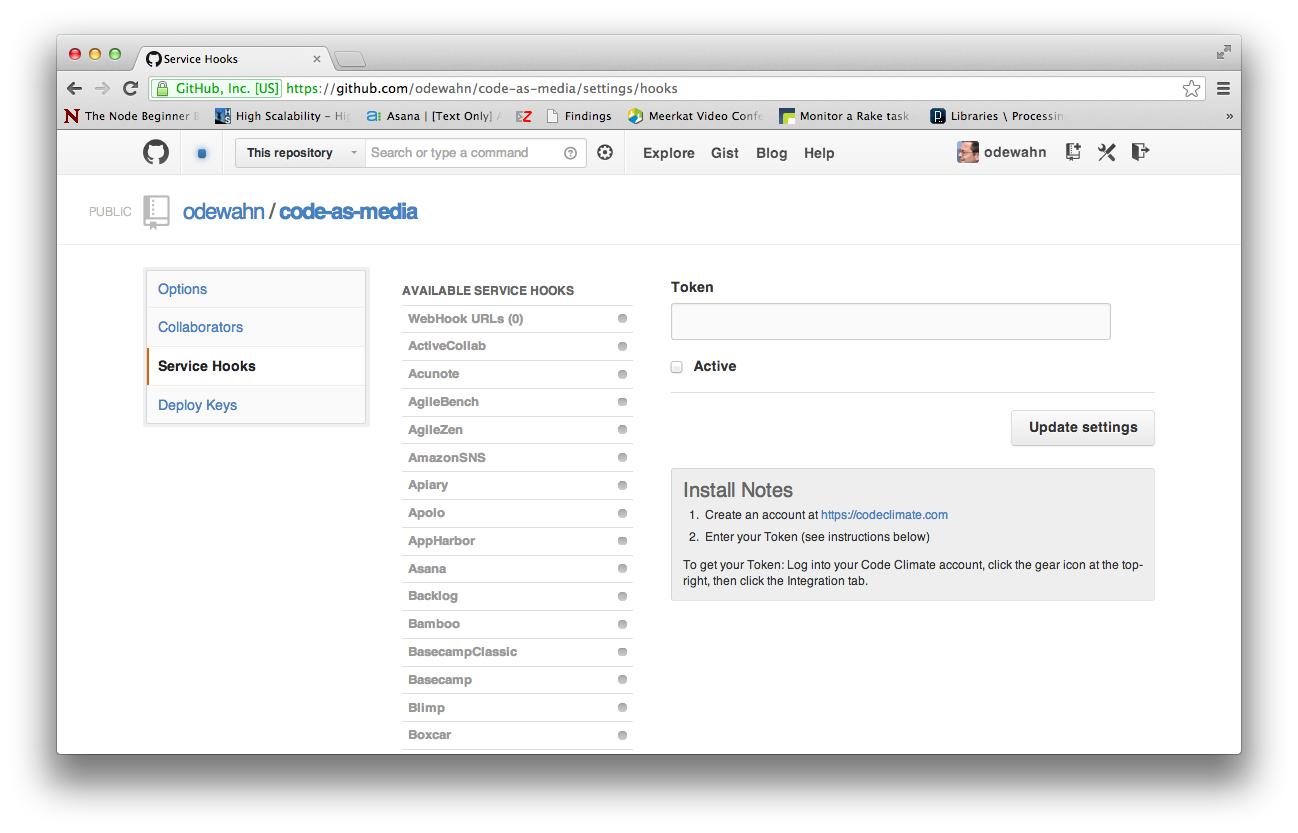Code Analysis and Metrics
This section covers services that evaluate a code repo and create ancillary material for it. For example, a service might compute various metrics (code coverage for a test suite, etc), project management assets (for example, it sends a message to a chat service when someone commits), documentation (rebuilds automated docs on each commit), or other software engineering-related items.
The tools are often implemented as webhooks within a CI server (Jenkins, etc) or in the underlying version control system. These services can either be free or paid. If they’re paid, they’re typically implemented by having the user register for a paid service and enter some sort of authorization token into the web hook. ?, for example, shows how paid service is configured in GitHub’s "Service Hooks."

Examples of metrics include:
CodeClimate
CodeClimate provides automated Ruby code review. You give it a repo by (among other ways) creating a GitHub service hook, and it will give you back some reports. It’s a paid service with a tiered pricing scheme.

Documentation Generators
This section covers tools that build documentation directly from the source code itself. This idea, called literate programming, was invented by Donald Knuth as a way to create self-documenting programs. The technique is used by many languages to create reference and API documents and sites.
Key tools include:
Sphinx. Documentation generator for Python.
JavaDocs. Documentation for Java.
